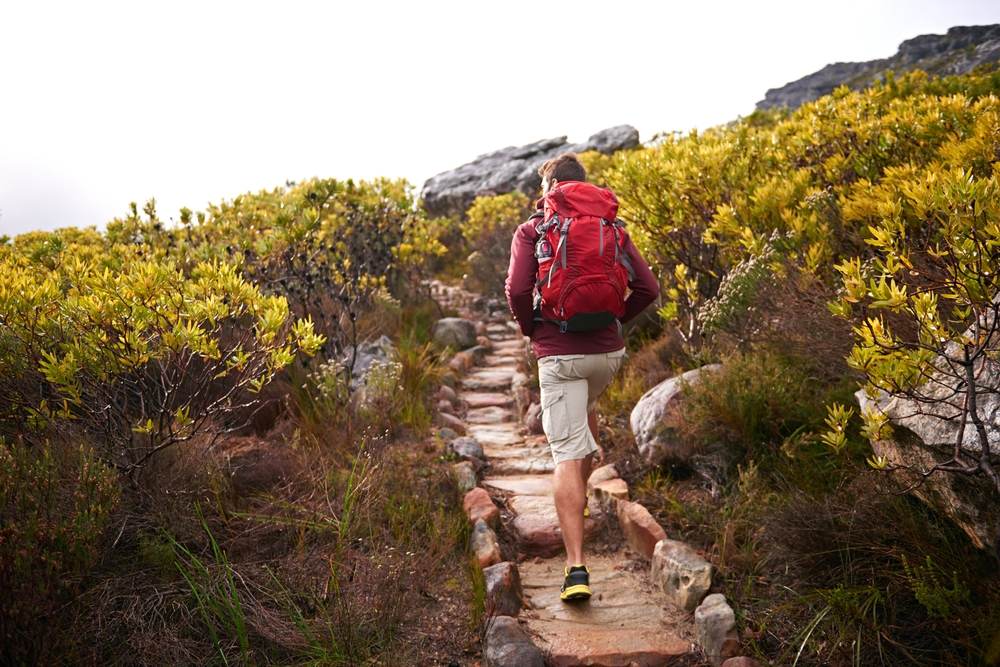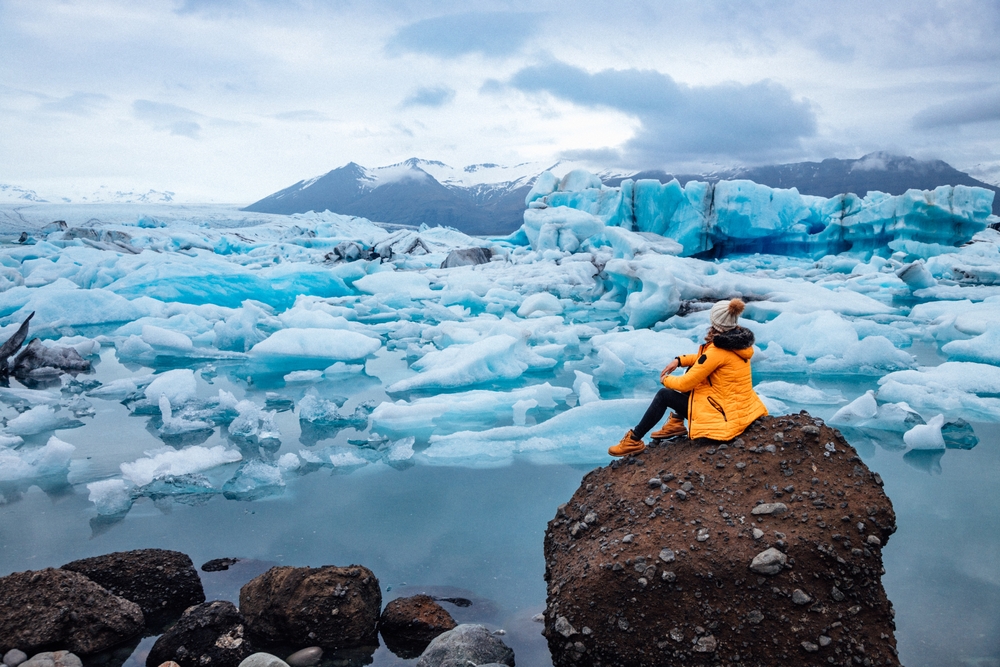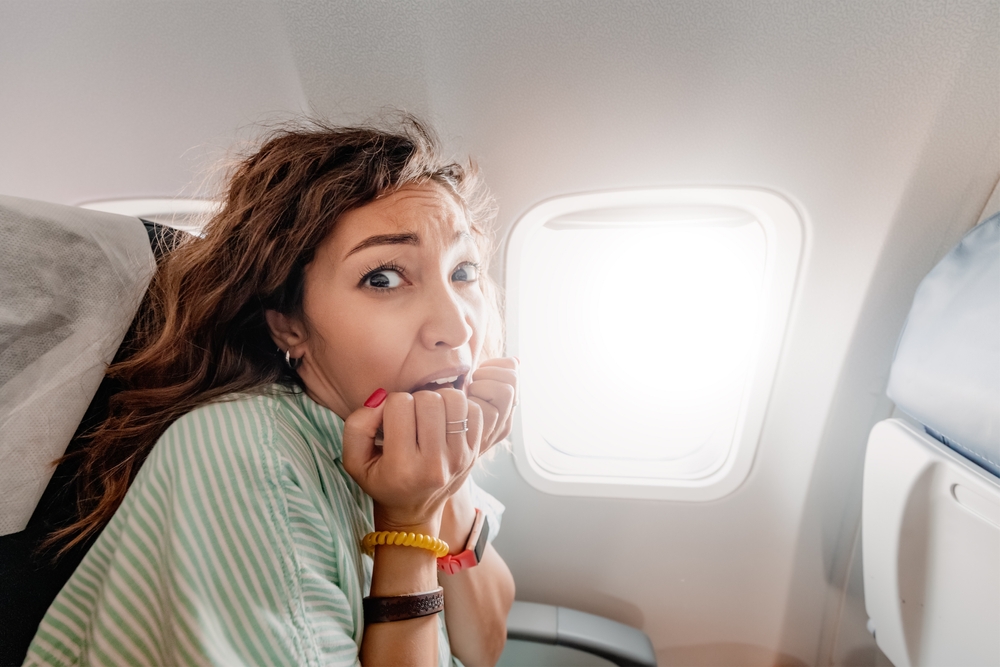We tend to fall into two distinct camps: those who stick fastidiously to their exercise routines when travelling and those who just don’t. I’m resolutely a part of the latter. My gym kit has taken a tour of the most exotic locations across the globe, failing to actually ever leave my suitcase. More often than not, I’ve returned home and taken my forlorn-looking kit out of the suitcase only to feel a familiar feeling: travel workout shame.
Perhaps my avoidance is partly justified. “For some people, a break can actually be hugely beneficial, especially if you’ve been training consistently for some time leading up to going away,” says personal trainer Luke Gouden. “But for most people, the big challenge of keeping up with fitness routines when travelling is that it tests any momentum you may have had, as well as your ability to get back on track when you return,” he says.
There’s little value in berating yourself or hurling your unused kit across the room in a flight of fury. “It sounds obvious but focus on what you can do when you’re away and the overall benefit of why staying on top of your fitness routine is important to you both mentally and physically. Mindset is everything, so remind yourself of the importance of the energy boost and endorphins you get from exercising,” Goulden says reassuringly. If fitting movement into your travelling is something you’re struggling with, here’s how to navigate it…
1. Manage your own expectations…
I start every potential trip thinking I’ll work out every morning and yet, I don’t actually do that back home. Goulden says: “Be realistic. Imagine a volume dial on a stereo that you can turn up and down. Accept that you may have to dial down your fitness routine, but not dial it completely off. Is there a way for you to maintain consistency and momentum? If so, what does that look like for you?”
That might not be a daily workout at the hotel gym or a gruelling beach run in the sweltering heat. Instead, walking a bit more each day for example when you’re away could be enough. If you find fitness tricky to maintain when you travel, perhaps just do a little bit more than you usually would, and that could be enough to spur you on to do more. Set a small goal each time you go away, and just try to hit that – anything else is a bonus.
2. Make it easy and fun
One way to find the motivation to move is to make it fun and novel. Trying a class in a new location lets you sample the local culture and have fun and it’s a great way to meet new people too. Using an app like ClassPass, which is available in 30 countries across five continents, also allows you to find classes and gyms super easily. The app automatically detects your location and shows you what’s on offer nearby – and you can use your credits and membership wherever you are. Many gym chains also offer digital workout videos so you can take your workout with you. If you can make your exercise fun and part of the holiday experience, then that’s also a bonus: “Hiking is a good option to see nature, you can enjoy volleyball on the beach in Spain, play football in Brazil, kayak in Australia and rock climb in Scotland. Each new location can have a new exciting form of activity to try,” says Adam Byrne Regional Clinical Fitness Lead for Nuffield Health.
Alternatively, says celebrity personal trainer Peter Mac, make your transport your workout. “Don’t use taxis, just – if you’re able to – walk everywhere. Walking increases your N.E.A.T (non-exercise activity thermogenesis) and is the best way to explore the place you’re in and its surroundings.”
3. Schedule it in…
You might have made restaurant reservations or have massages pre-booked, but that approach works for exercising too. Mac advises, “Schedule your workouts in your calendar like you would any other appointment. Block out one hour in your diary, in advance, so it doesn’t get taken over by anything else or so you can easily move it if something urgent comes up. You don’t necessarily need to work out for one hour but at least you have the time blocked out. When you treat your workouts like an appointment you’re prepared and committed so you’re more likely to fit it in – you wouldn’t miss a business meeting would you?” You want to ‘fail proof’ all areas.”
Not feeling a full workout? Welcome to my world. Just commit to 10 minutes with no pressure – chances are once you’ve started, you’ll keep going a little longer.
4. Bring the right kit with you…
If you’re dedicated, then you could think about taking some resistance bands with you or, as Mac advises, a skipping rope. “You can use it in your hotel room or outside if your hotel doesn’t have a gym. You can do a full body workout in 15-25 minutes – a skipping rope is great if you’re short on time,” he says. If luggage space is at a premium, chances are your gym kit might be the item you ditch first, especially if you’re just taking hand luggage. Mitigate that by packing some kit that’s super light and dries fast, and is perfect for different sports like yoga and running.
Just having a way to track your steps can help keep you motivated, but a smartwatch can also notify you when you’re due to workout, and the Apple Fitness+ app (in Apple watchOS 9) has tonnes of new ways to monitor your workouts, from the inclusion of new running form metrics (like stride length and ground contact time) to extra precise workout data and new workout experiences – perfect if you’re data-driven.
5. Take away the reasons to not do it…
Taking away any potential obstacles makes it far easier to follow through on your fitness goals, although jet lag can be tough to combat: “Turning off devices and resting can help, as does aiming for 7-8 hours of sleep per night,” says Byrne. Trekking to the hotel gym might feel like a slog, so you could even request a room that’s closer to it and laying your kit out the night before helps too. But if it’s raining, getting outside for a walk or class feels like an extra hurdle to jump (or not jump, more to the point) so bring an all-weather jacket.
Having trainers that are suitable for walking, shorter runs and the beach also means you won’t come up with kit-related excuses. Pick shoes that are water-repellant, and have all-condition traction for unpredictable weather.
6. Stay in your room…
If all else fails, make your hotel room your gym. Follow these tips from Jordan Stanford, White City House Fitness Coach, on how to work and utilise your hotel furniture. “Beds or chairs can be used for a variety of different bodyweight exercises both to increase or decrease difficulty. Most bodyweight exercises can be performed in only the space a yoga mat would take up, so even in the tightest of spaces you can still get in a full-body workout. Perform this as an AMRAP (As Many Rounds As Possible) in your given time frame…
10 Air Squats
20 Lunges (10 each side) – Or for more of a challenge using a table or chair for Bulgarian Spilt Squats.)
10 Push Ups – to modify, place hands on a higher surface such as a bed for an incline push up
20 Mountain Climbers
10 Glute Bridge – To increase difficulty position shoulders on edge of the bed and perform Hip Thrusts with feet on the floor
20 Single Leg Bridge/Thrust (10 on each side)
10 V Ups
20 Russian Twists



